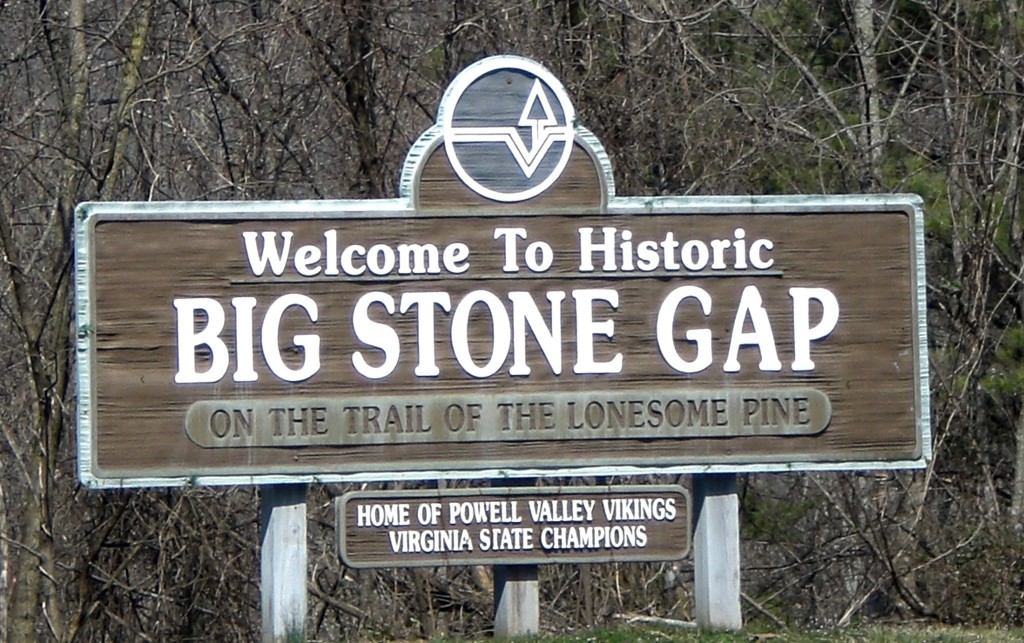
Fig. 4.1. Roadside sign welcoming visitors to Big Stone Gap, Virginia.
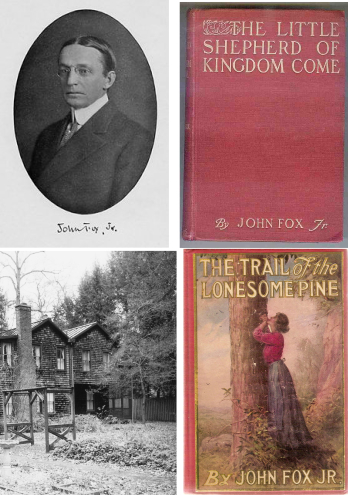
Fig. 4.2. John Fox, Jr. Clockwise from top left: a.) Photo of John Fox, Jr., b.) The Little Shepherd of Kingdom Come published 1903, c.) The Trail of the Lonesome Pine published 1908, and d.) Photo of the Fox family home in Big Stone Gap, Virginia.

Fig. 4.3. Photo collage of Big Stone Gap businesses.
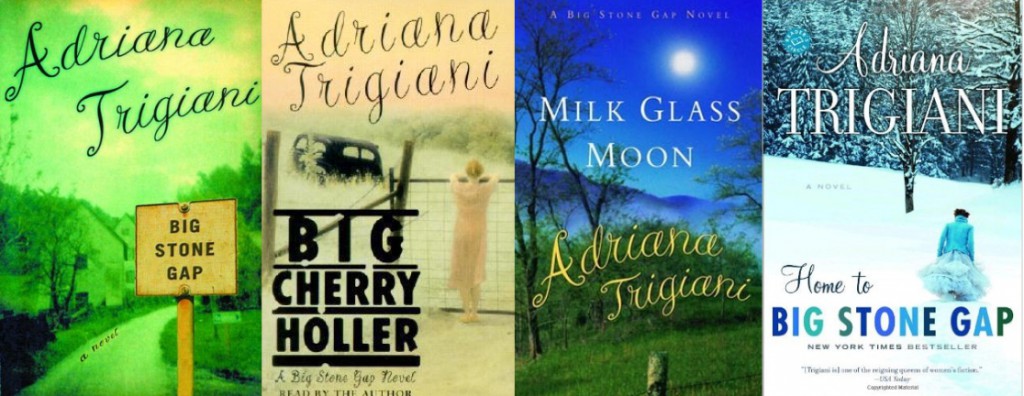
Fig. 4.4. Covers to the first edition printings of Adriana Trigiani’s Big Stone Gap novels: Big Stone Gap (2000), Big Cherry Holler (2001), Milk Glass Moon (2002), and Home to Big Stone Gap (2006).
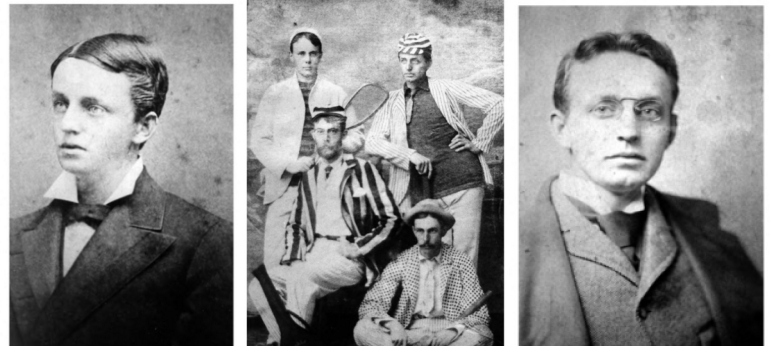
Fig. 4.5. John Fox, Jr. before Big Stone Gap. From left to right: a.) Photo of John Fox, Jr. at age 15 or 16, b.) Photo of Fox in a Harvard theatrical production (John is on the right with his hand on his hip), c.) Photo of John Fox, Jr. shortly after his graduation from Harvard.
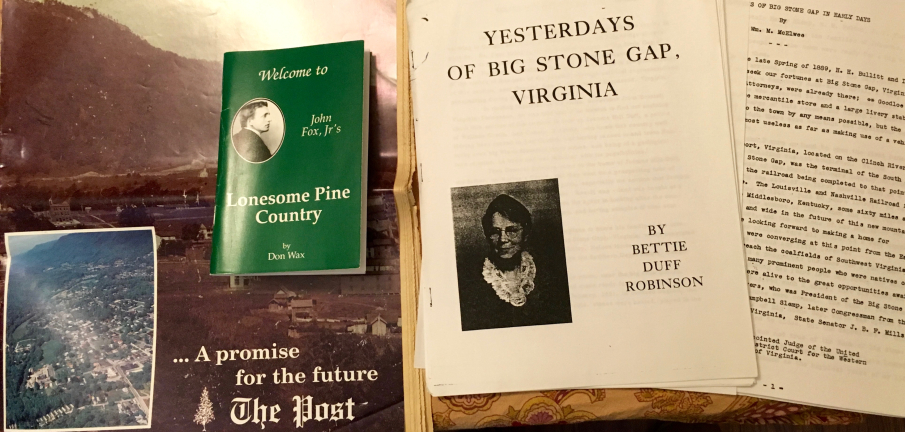
Fig. 4.6. Collection of local history documents including Don Wax’s 1996 pamphlet “Welcome to John Fox, Jr.’s Lonesome Pine Country” and Bettie Duff Robinson’s 1961 memoir, Yesterdays of Big Stone Gap, Virginia.
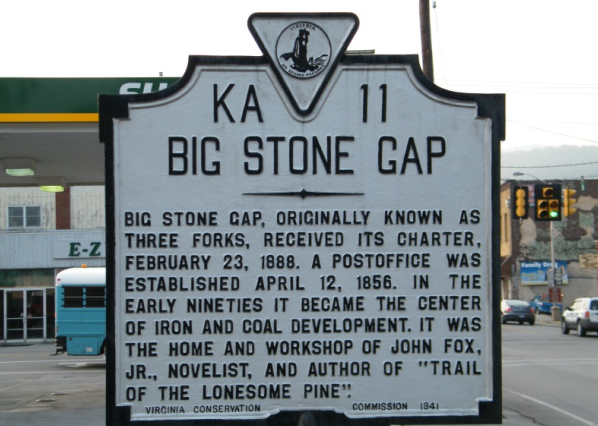
Fig. 4.7. Roadside marker in Big Stone Gap.

Fig. 4.8. The transmedia Trail of the Lonesome Pine. From left to right: a.) Cover to sheet music for the popular song “The Trail of the Lonesome Pine” by Ballard MacDonald and Harry Carroll in 1913, b.) Film still from Cecil B. DeMille’s 1916 silent film The Trail of the Lonesome Pine, c.)Film still of Antonio Moreno and Mary Miles Minter in Charles Maigne’s 1923 film The Trail of the Lonesome Pine, d.)Promotional poster for Henry Hathaway’s 1936 film The Trail of the Lonesome Pine.
Fig. 4.9. Video clip of Stan Laurel and Oliver Hardy performing “The Trail of the Lonesome Pine” in Way Out West (1937).

Fig. 4.10. Photo collage of the John Fox, Jr. House and Museum in Big Stone Gap, Virginia.
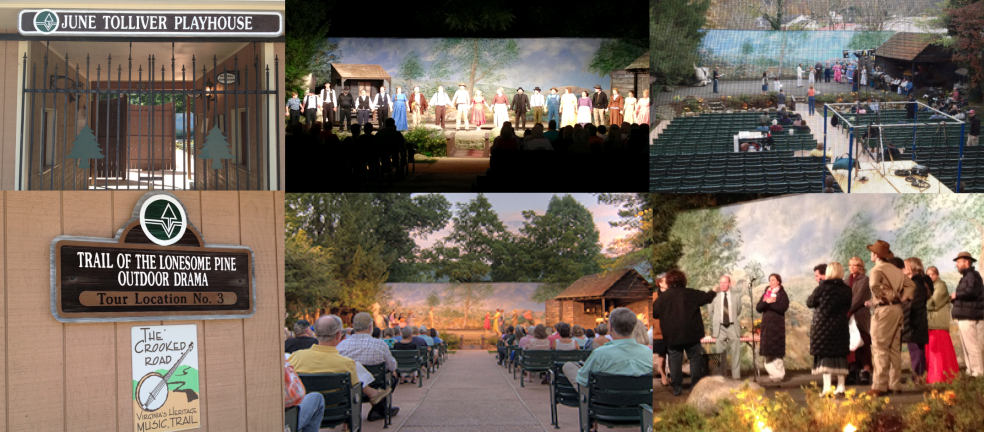
Fig. 4.11. Photo collage of The Trail of the Lonesome Pine Outdoor Drama.
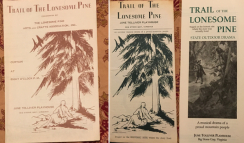
Fig. 4.12. Playbills for The Trail of the Lonesome Pine Outdoor Drama. From left to right: a.) Promotional brochure for 1964 production of The Trail of the Lonesome Pine Outdoor Drama, b.) Playbill for the 1964 production of The Trail of the Lonesome Pine Outdoor Drama, c.) Promotional brochure for contemporary production of the outdoor drama
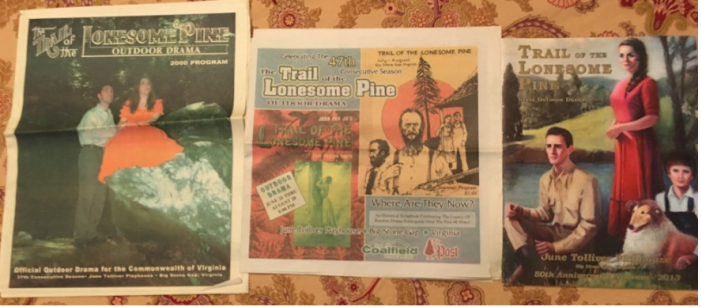
Fig 4.13. More playbills for The Trail of the Lonesome Pine Outdoor Drama. From left to right: a.) Playbill from the 2000 production (in which an 18-year-old Ben Bolling played Jack Hale), b.) Playbill from the 47th anniversary production, c.) Playbill from the 50th Anniversary production in 2013.

Fig. 4.14. June Tolliver House. (Left) Advertisement for June Tolliver House and Craft Shop. Courtesy of Lonesome Pine Arts and Crafts, Inc. (Right) Photos of the June Tolliver House.
Fig. 4.15. Red Fox/Second Hangin’. A 90 minute recording of a live performance of Red/Fox Second Hangin’ shot in 1982 in Carcassone, Kentucky. The play by Don Baker and Dudley Cocke is performed by Don Baker, Gary Slemp, and Frankie Taylor. The video is a production of Appalshop/Roadside Theater and was produced by Dudley Cocke, directed by Don Baker, and edited by Anne Lewis.
Fig. 4.16. Big Stone Gap(2015) film trailer.
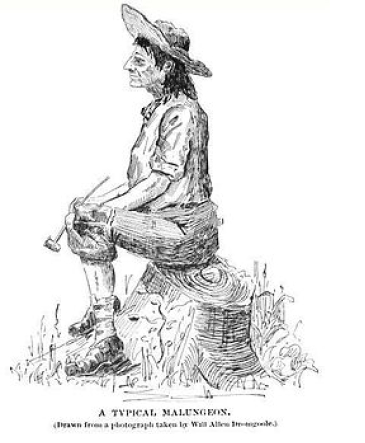
Fig. 4.17. “A Typical Malungeon” illustration by Will Allen Dromgoole, circa 1890.Fig. 4.18. Pamphlet advertising Walk Toward the Sunset outdoor drama, ca. 1976.
Fig. 4.19. YouTube video posted by Verna Howard. Actress Jasmine Guy discusses playing a Melungeon character in Big Stone Gap (2015). The full cast interview at the 2014 Virginia Film Festival is available as an extra feature on Blu Ray and DVD editions.
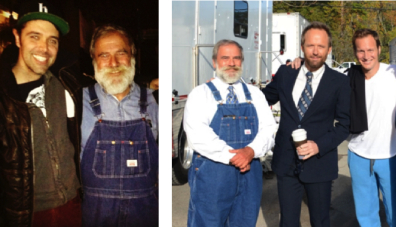
Fig. 4.20. (Left) Photo of Ben Bolling with Jack McClanahan in costume as Worley Olinger on the set of Big Stone Gap. (Right) From left to right, Jack McClanahan, John Benjamin Hickey, and Patrick Wilson who plays “Jack Mac” in Big Stone Gap (2015).
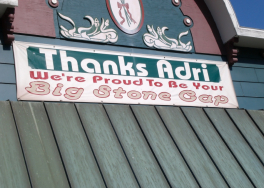
Fig. 4.21. Photo of banner above L. J. Horton Florist in downtown Big Stone Gap in 2010.

Fig. 4.22. “The Big Stone Gap Map” produced by the LENOWISCO Planning District circa 2000 lists area locations mentioned in Adriana Trigiani’s Big Stone Gap novel.

Fig. 4.23. Carmine’s. From left to right: a.) Photo of the “real” Carmine’s (a popular mid-20th century Big Stone Gap establishment), b.) Photo of empty Big Stone Gap gas station, c.)Photo of construction during which the gas station was converted to Big Stone Gap set piece Carmine’s.
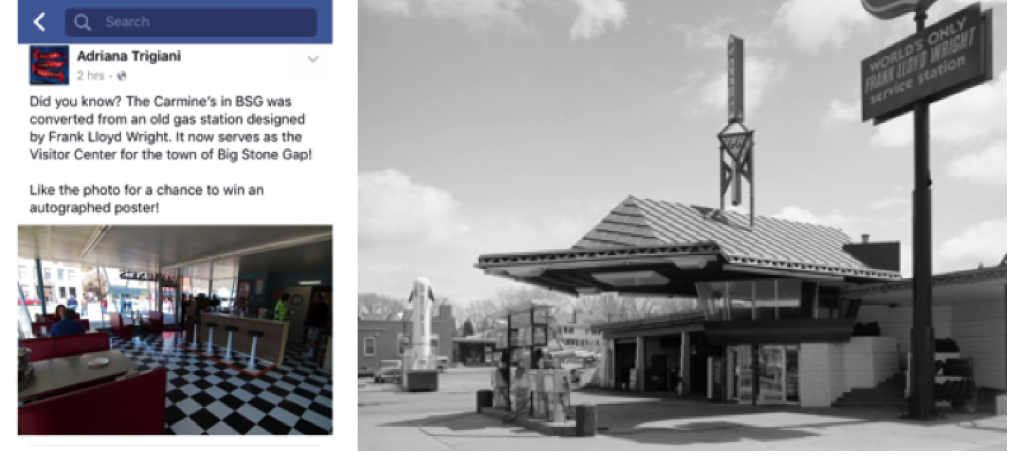
Fig. 4.24. The Story of Carmine’s. (Left) Screencap of Adriana Trigiani’s Facebook post telling the design story of the set piece Carmine’s. (Right) Photo of the R.W. Lindholm Service Station in Cloquet, Minnesota with “World’s Only Frank Lloyd Wright Service Station” sign.